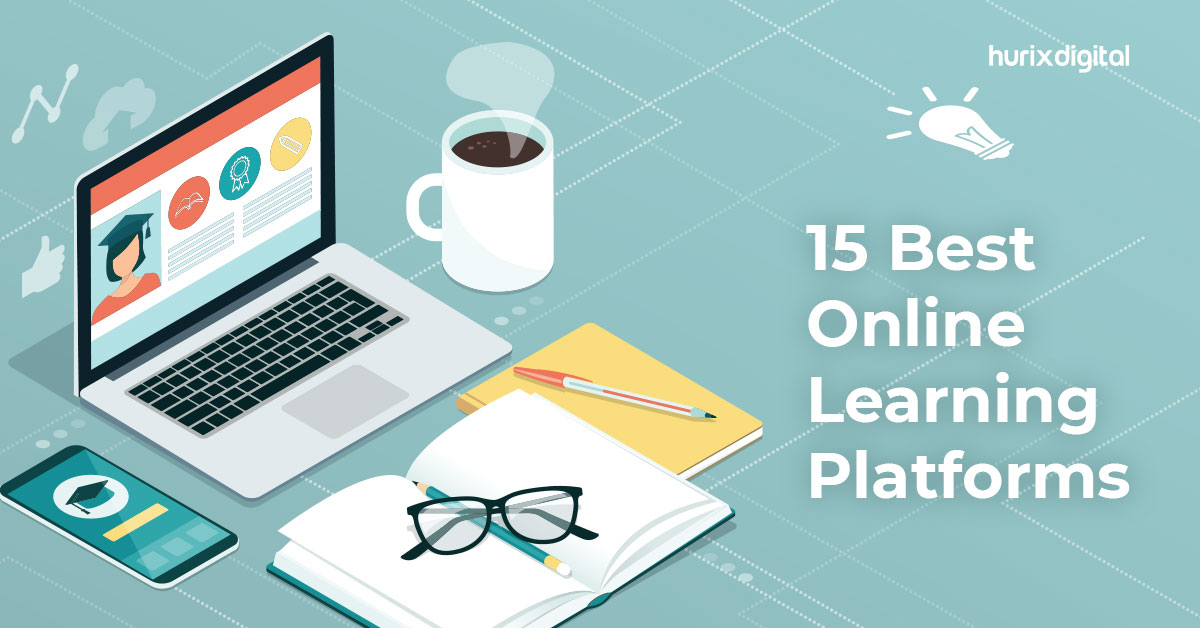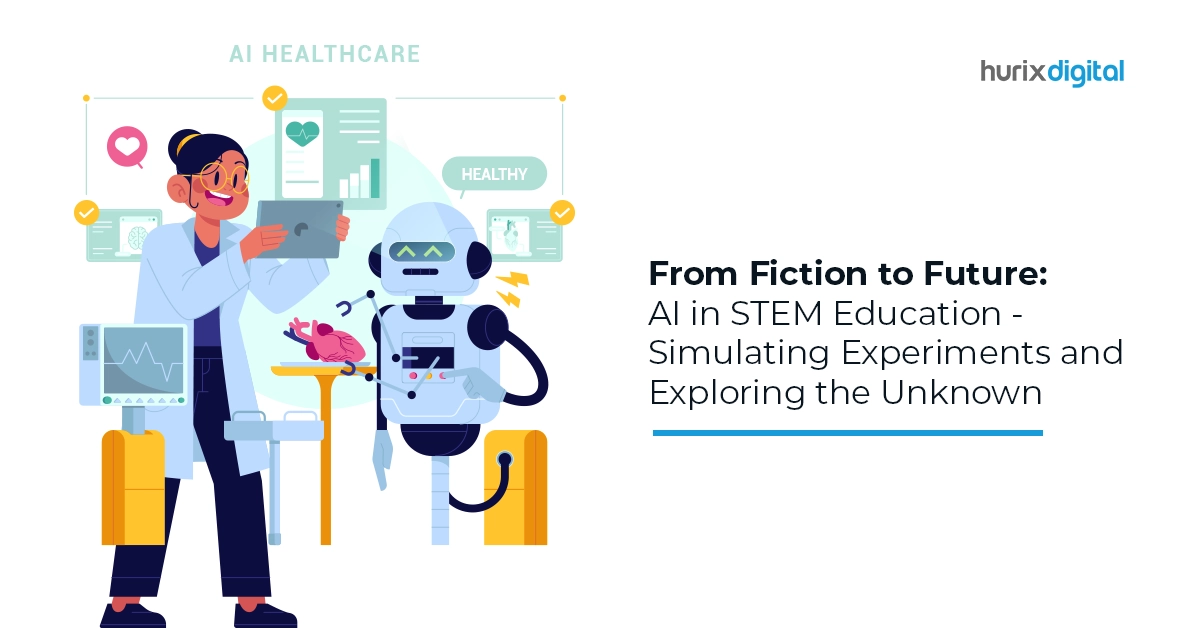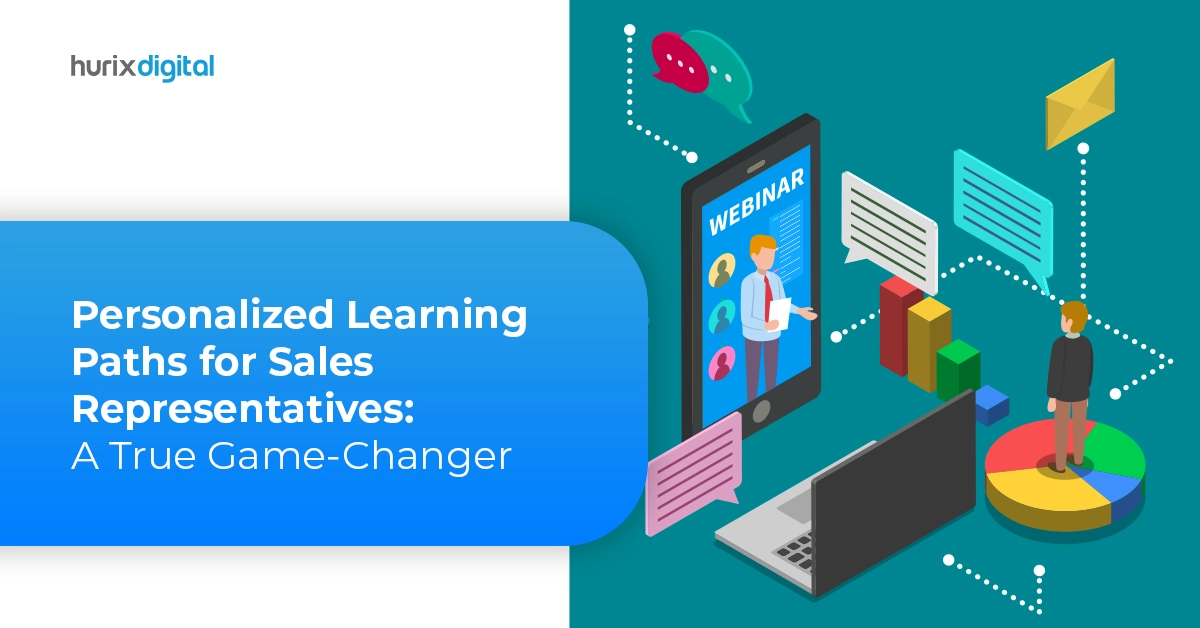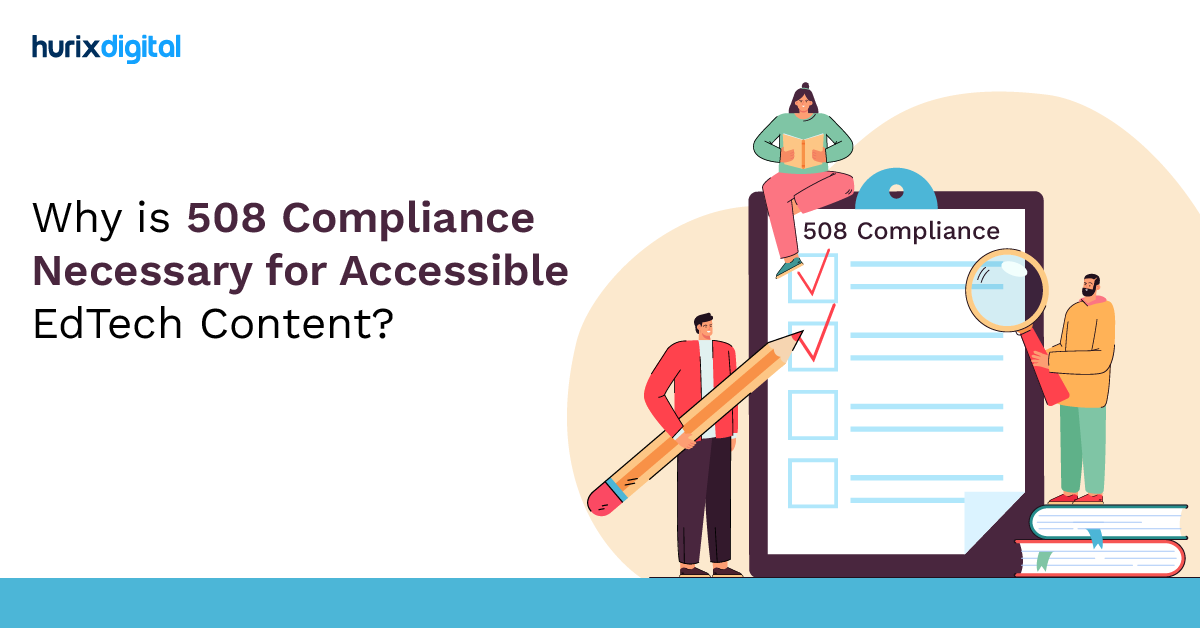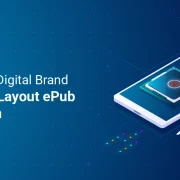
How Educational Games Make Learning More Engaging and Effective for Students?
The digital era of innovation in education is upon us, and educators and learners are considering the potential benefits of these technological advancements. Classrooms and course materials are constantly evolving, and technology plays a primary role in driving student engagement and motivation.
Imagine a hypothetical educational scenario depicted through gamified learning solutions. Isn’t that revolutionary?
Well, that’s what the edtech sector has brought to the education sector: more opportunities to explore students’ learning potential.
You no longer must depend on traditional teaching methods to deliver enhanced learning through online learning games. Today, game-based learning in a classroom is a game-changer with the myriad ways it helps students learn and apply different concepts in various contexts across generations.
Do you want to make a wise investment in the future of education?
Let’s dig deeper and answer questions like:
- What is online game-based learning?
- What is an example of game-based learning in education?
- What are the benefits of online game-based learning?
Table of Contents:
- Online Game-Based Learning in Education
- Examples of an Online Game-Based Learning Platform
- What are the Top 5 Benefits of Game-Based Learning in EdTech?
- Essential Features of Self-Centered Learning
- 7 Benefits of Self-Centered Learning
- How Educational Video Games Support Self-Centered Learning?
- Concluding Thoughts
Online Game-Based Learning in Education
An interesting statistical finding is that the game-based learning market size and revenue share are expected to exceed USD 52.8 billion by 2030. With such a booming presence, let us understand how this pedagogical approach can help students worldwide.
Game-based learning is an interactive and collaborative form of teaching that promotes learning and challenges students by using game elements in the learning environment.
Gamified learning solutions can be an application specifically designed to simplify mathematical concepts. They can also be an actual game in which students explore and learn through the quests, levels, rewards, and so forth present within the game.
Game-based learning can take many forms and provide a learning mode either as a team or at the individual level. Some games are fully immersive worlds where students can choose their paths through adventures with different challenges.
Other games are more like puzzles or interactive tutorials, using different types of media (text, images, video) to teach concepts engagingly.
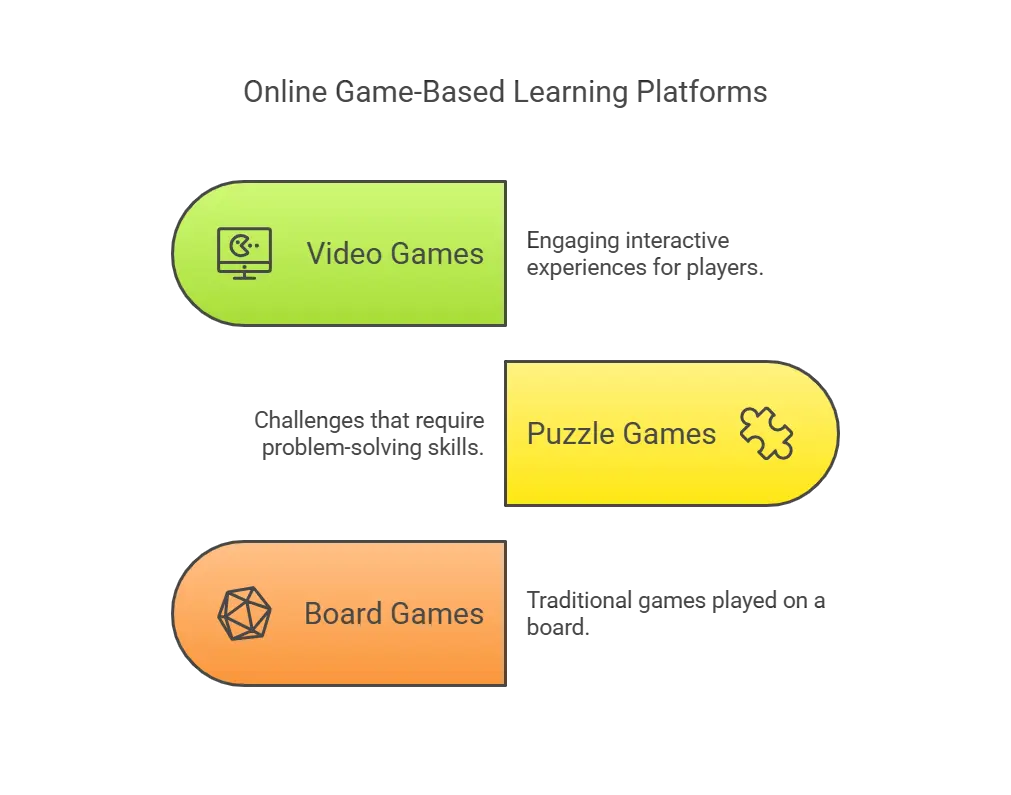
Examples of an Online Game-Based Learning Platform
Game-based learning can be used in various educational environments, including K-12, higher education, and corporate training. This is one of the vital reasons why the global K12 game-based learning market is accelerating, with a CAGR of 20% in the forecast period of 2021-2025.
Let’s see why game-based learning software is such a raging success. There are so many examples of games that can be employed and successfully implemented by educators:
1. Video Games
There are multiple reasons why video games are so popular among children. There are approximately 3.09 billion video gamers globally.
Now, that’s massive in terms of an avenue for online game-based learning and a world of opportunities for the community of educators. Depending upon the students’ interest levels, you can choose between role-playing games, action games, simulations, adventures, and so forth.
A common thread in such environments is the ability to develop critical thinking skills and decision-making among students. All you need to do is align your curriculum to the game environment and teach the courses or subjects through the game.
2. Puzzle Games
A brilliant example of such a game is Sudoku, where you keep the brain stimulated and use your logic to complete the puzzle as soon as possible.
Solving puzzles helps students develop a deeper understanding of different scenarios. It emphasizes spatial and cognitive methods for recognizing patterns and aligning them for a successful outcome.
Researchers have established the connection between puzzle-based learning approaches and outcomes like problem-solving, cognitive thinking, and decision-making.
3. Board Games
The most popular board games include Ludo, Scrabble, Monopoly/Business, Chess, and so forth. Each has the unique quality of keeping children highly engaged and keeping up with their competitive streaks.
Children can learn important educational skills like vocabulary, problem-solving, sharpness of acumen, intellectual application, and so forth through online game-based learning, which can take many forms.
It could be as simple as playing a game that helps students practice math skills, like Monopoly, or adding a game component to an existing lesson plan to make it interesting and enriching. For instance, if you’re teaching about ancient civilizations, you could design a game where players must go back in time to gather all the information required to solve a mystery.
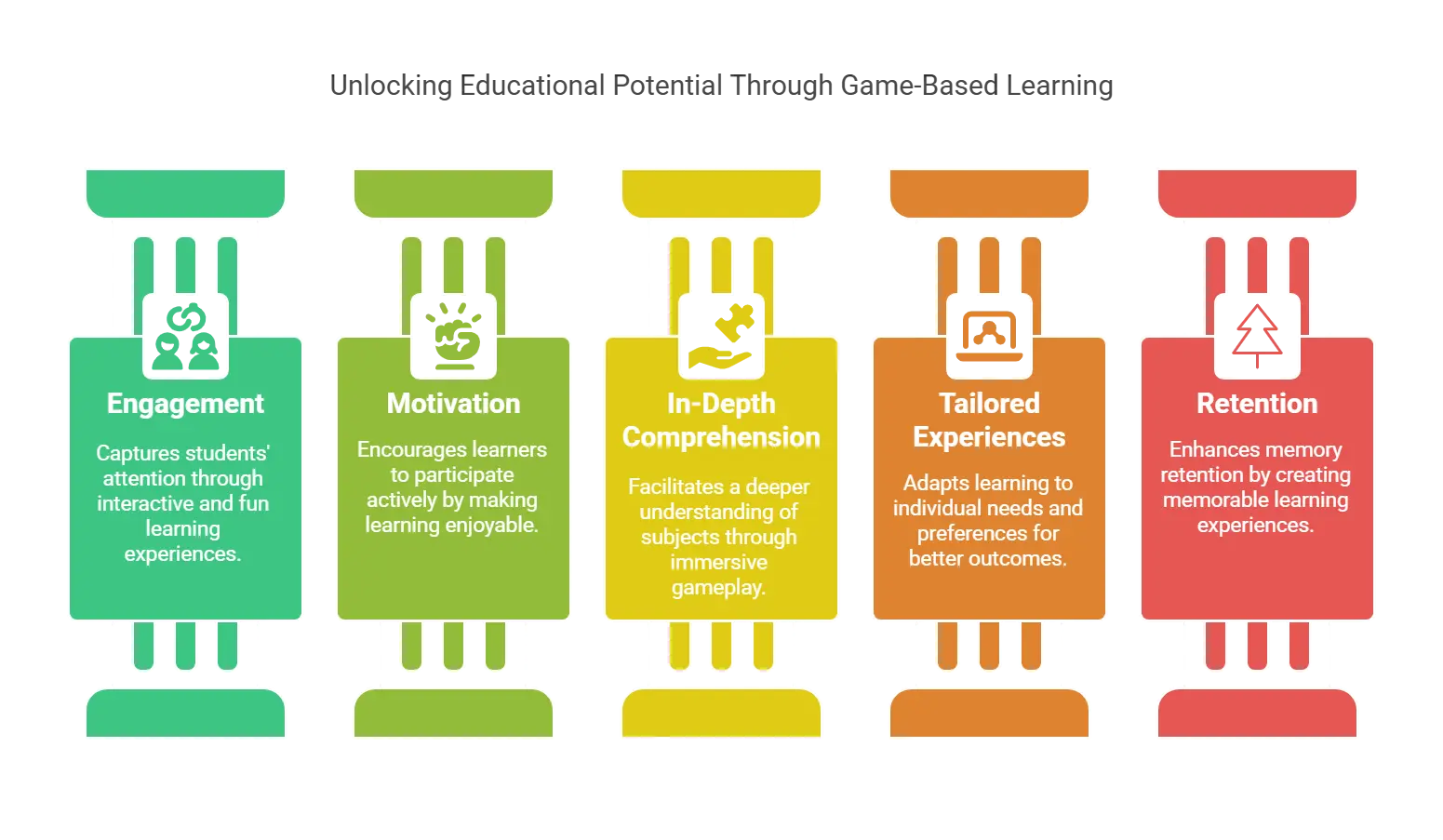
What are the Top 5 Benefits of Game-Based Learning in EdTech?
Online game-based learning can take many forms. It could be as simple as playing a game that helps students practice math skills or adding a game component to an existing lesson plan.
For example, if you’re teaching about ancient civilizations, you might create a virtual game using AR/VR techniques and simulations. Students travel back in time to find all the clues they need to solve a mystery.
This could include finding fossils in Africa, researching ancient Egyptian hieroglyphics, and reading historical documents written by historians who were alive during that period.
The benefits are:
1. Engagement
Students are more likely to be engaged When they have a goal to work towards and experience success. About 67% of students support the fact that gamified learning solutions are more engaging and motivating than traditional teaching methods.
Game-based learning provides this drive and engagement by allowing students to progress through their courses at their own pace while facing challenges.
2. Motivation
Students find motivation in achieving milestones, not just receiving grades. Game-based learning allows students to earn badges and other rewards for completing tasks- something that many conventional course formats lack.
These rewards motivate students because they are earning something instead of simply completing the material without any evidence of mastery.
3. In-Depth Comprehension
Students can grasp concepts when engaging in activities because these games require them to utilize their logic and problem-solving skills. This is particularly beneficial for subjects like math and science involving complex ideas.
4. Tailored Experiences
Through game-based learning in education, instructors can craft experiences that cater to each student’s unique needs. About 74% of teachers use game-based learning tools and approaches.
Additionally, they can easily adjust the difficulty levels of these games based on their student’s skill sets and interests. This level of customization allows instructors to tailor their courses specifically for each student, surpassing what traditional face-to-face courses can offer.
5. Retention
Games offer both short-term and long-term benefits. Studies have shown that students who participate in online games retain more information than those who do not.
Essential Features of Self-Centered Learning
Self-centered learning, also called self-directed learning or self-regulated learning, is an educational approach that places the responsibility of learning on the student. In this approach, students actively set their learning goals, plan their study, and evaluate their progress. The focus is empowering students to become independent, motivated, and lifelong learners.
Traditional education often relies on a teacher-centered model, where educators plan and execute the curriculum, pace, and assessment methods. However, self-centered learning recognizes students’ unique interests, preferences, and learning styles. By allowing students to take charge of their educational journey, self-centered learning fosters a deeper understanding of the subject matter and helps develop critical thinking and problem-solving skills.
One of the fundamental principles of self-centered learning is autonomy. Students can choose what, when, and how they learn. They can select topics that align with their interests and aspirations, creating a more engaging and enjoyable learning experience. Additionally, students can determine their learning pace, ensuring they grasp concepts thoroughly before moving on to more complex subjects.
A second aspect of self-centered learning is the development of metacognitive skills. Metacognition refers to the ability to reflect on one’s learning processes and adapt strategies accordingly. In a self-centered learning environment, students regularly assess their understanding, identify areas that need improvement, and adjust their learning approaches to achieve better results.
Self-centered learning does not require a lack of structure or reduced guidance. Instead, it offers a balance between freedom and support. Educators and mentors play crucial roles in this approach, providing guidance, resources, and constructive feedback. They act as facilitators, helping students navigate their learning journeys and offering assistance when needed.
Technology has significantly enhanced self-centered learning via gamification in education. Educational video games, online game-based learning, and game-based activities enable students to access vast information and engage in dynamic learning experiences. Educational games often incorporate quizzes, forums, and progress tracking, empowering learners to monitor their growth effectively.
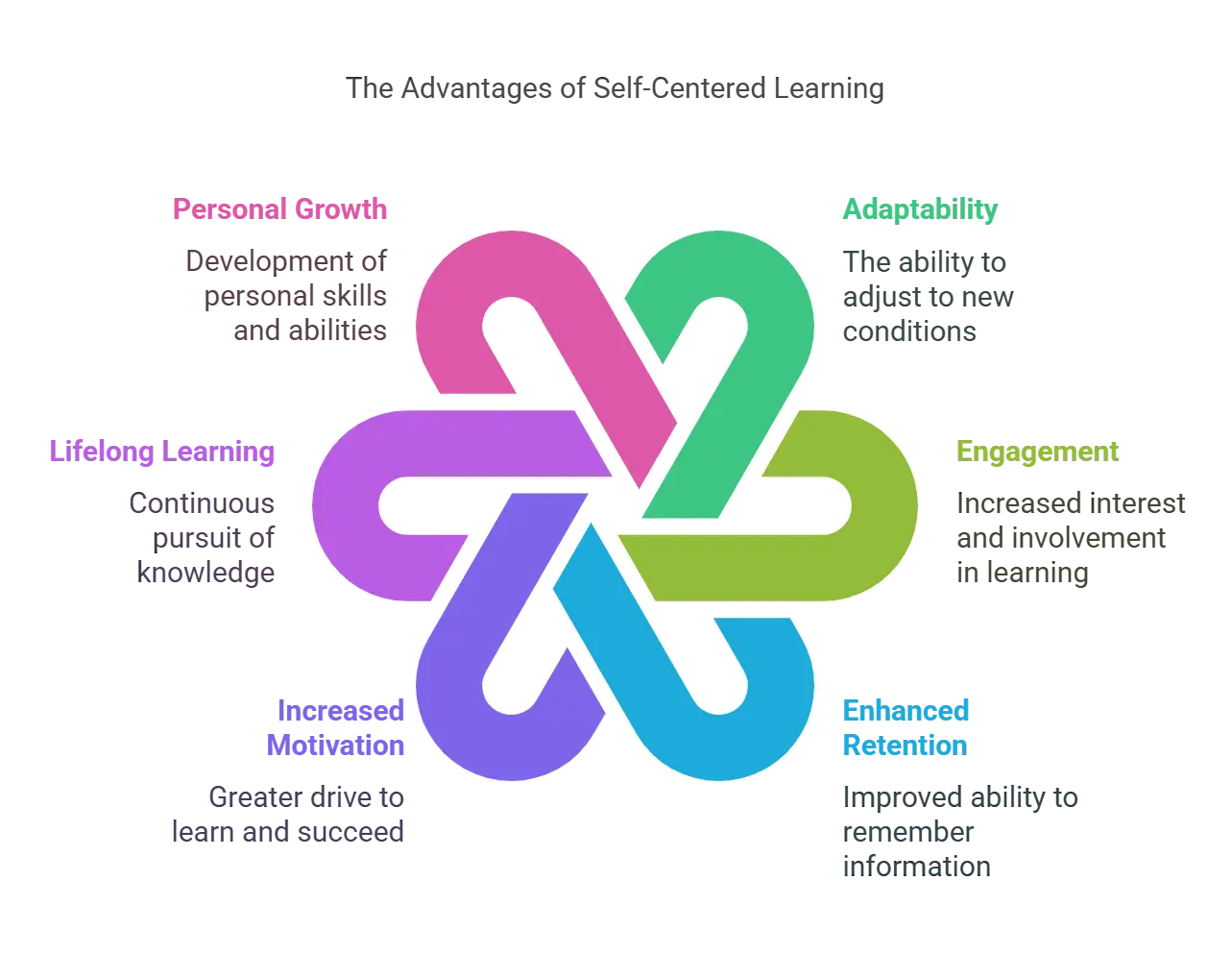
7 Benefits of Self-Centered Learning
Here are 7 benefits associated with a self-centered learning approach.
1. Adaptability
Students develop the ability to adapt their learning strategies to suit different subjects and challenges.
2. Engagement
When students actively participate in their education, they are more engaged and committed to achieving their goals.
3. Enhanced Retention
Ownership of the learning process leads to better retention and understanding of the material.
4. Increased Motivation
Students are more motivated when they have control over their learning experience and can explore topics of personal interest.
5. Lifelong Learning
Self-centered learning equips students with the skills to become independent learners throughout their lives.
6. Personal Growth
Self-centered learning fosters critical thinking, problem-solving, and time management skills, promoting personal growth and development.
7. Self-Awareness
Students can gain valuable insight into their strengths and weaknesses, helping them make informed decisions about their educational and career paths.
Despite these benefits, self-centered learning also presents challenges. Some students may need help managing their time or more self-discipline required for independent learning. Moreover, certain subjects might require more structured instruction, making a balance between self-centered and teacher-centered approaches essential.
How Educational Video Games Support Self-Centered Learning?
Educational video games offer support for self-centered learning in several ways. One crucial aspect of self-centered learning supported by educational video games is immediate feedback. Most interactive online learning games provide prompt responses to players’ actions, allowing them to see the consequences of their decisions. Positive reinforcement for correct answers and constructive feedback for mistakes encourage students to experiment, take risks, and learn from their errors without fearing judgment. This iterative process enhances learning retention and boosts self-confidence, as players can witness their progress firsthand.
Furthermore, game-based learning in education caters to individual learning styles and preferences. All students have unique strengths and weaknesses when it comes to absorbing information. Interactive online learning games offer diverse approaches to presenting content, including visuals, audio, text, and interactive elements. Players can choose the mode of information delivery that resonates best with them, optimizing their comprehension and knowledge retention.
The adaptability of educational video games and online game-based learning is another crucial feature supporting self-centered learning. Many educational games use adaptive learning algorithms that adjust the difficulty and content based on the player’s performance and progress. This ensures that students are consistently challenged appropriately, preventing frustration from tasks that are too difficult or boredom from too easy functions. As students become more proficient, many educational video games evolve accordingly, providing a continuous and personalized learning experience.
Gamification in education elements, such as points, rewards, and achievements, also contributes to self-centered learning. These game-based activities create a sense of accomplishment and intrinsic motivation for students to excel and progress. By setting personal goals and monitoring their achievements, students become more self-aware and develop a growth mindset, viewing challenges as opportunities for growth rather than obstacles.
Moreover, educational video games facilitate self-paced learning. In traditional classroom settings, instructors follow a fixed timetable, leaving little room for individual preferences and learning speeds. In contrast, educational games and online game-based learning allow students to pause, rewind, and replay content as needed, providing ample time for comprehension and mastery. This flexibility accommodates different learning paces, ensuring no one is left behind or rushed through the material.
Collaborative features in educational video games also promote self-centered learning by encouraging peer interaction and cooperation. Many interactive online learning games offer multiplayer options where learners can collaborate, compete, and share knowledge. Such social interactions foster communication skills, teamwork, and idea exchange, enhancing the learning experience.
Concluding Thoughts
Game-based learning is a tool with applications for young learners. By integrating this technology into their coursework, students can acquire skills and concepts for success in their classes.
Furthermore, game-based learning offers easy-to-digest and rapidly understood curricula that capture students’ attention. Educational institutions that incorporate technology are investing in their student’s prospects.
At Hurix Digital, we recognize that online game-based learning appeals to both users and newcomers, whether applied in a classroom setting as an extracurricular activity or as an avenue to acquire new skills.
With many benefits and learning opportunities, these games provide learning outcomes that continue to evolve and improve. As a result of this progress, we expect more institutions to embrace GBL and gamification technology in education in the coming years.

Senior Vice President
A Business Development professional with >20 years of experience with strong capability to sell new solutions and develop new markets from scratch. New Market Entry Specialist with experience of working in two of the largest emerging markets – China & India. Also covered other key markets in APAC, US, EU & ME. Exceptional experience of conceptualizing, ideating and selling new learning technologies like VR AR, etc. across multiple industry verticals.
